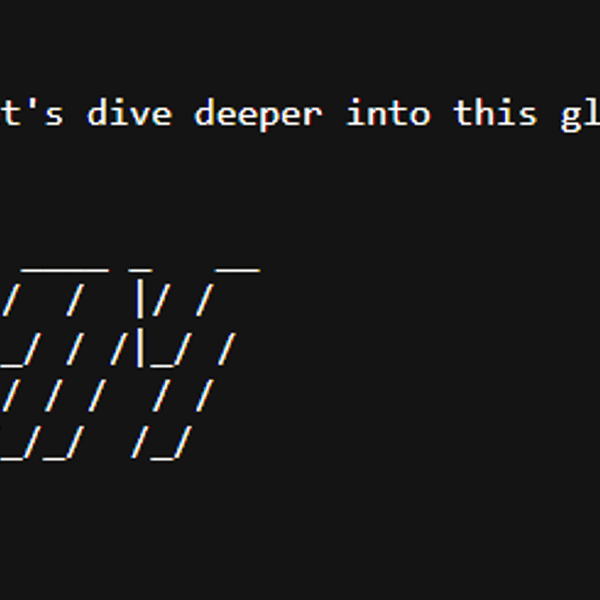
Coin-related
Price calculator
Price history
Price prediction
Technical analysis
Coin buying guide
Crypto category
Profit calculator
What is StakeStone (STO)?
StakeStone basic info
What is StakeStone (STO)?
StakeStone (STO) is an omnichain liquidity infrastructure platform committed to building the first stable, yield-bearing liquid ETH and BTC assets. By leveraging an adaptive staking network, StakeStone supports various risk-free consensus layers with native assets, optimizing yield opportunities through adaptable underlying strategies and an on-chain proposal mechanism. The platform seamlessly redistributes liquidity across multiple ecosystems and protocols, aiming to establish new standards for liquid assets and enhance liquidity distribution within the DeFi landscape.

Who Created StakeStone (STO)?
StakeStone was co-founded by Charles K, who envisioned creating a next-generation omnichain liquidity infrastructure for decentralized finance. The team's mission is to drive innovation and global adoption of their products by integrating real-time high-performance blockchain networks, thereby propelling the crypto industry into the era of super applications.
What VCs Back StakeStone (STO)?
In November 2024, StakeStone announced the successful completion of a $22 million investment round led by Polychain Capital, a prominent venture capital firm specializing in blockchain-based projects. This funding round also saw strategic investments from Binance Labs and OKX Ventures, with additional participation from investors such as SevenX, Nomad Capital, HashKey Capital, HashKey Cloud, Amber Group, Coinsummer, Bankless Ventures, DAO5, Symbolic Capital, Arcane Group, and Quantstamp. This substantial financial backing positions StakeStone for accelerated growth, enabling the expansion of its product offerings and the strengthening of its presence in key markets.
How StakeStone (STO) Works
StakeStone operates by introducing innovative products designed to enhance the liquidity and utility of BTC and ETH assets within DeFi ecosystems. Its key components include STONE, SBTC, STONEBTC, and STO.
1. STONE: The Liquid Staking Solution for ETH
STONE is StakeStone’s flagship liquid staking token for ETH, designed to enhance Ethereum staking efficiency while maintaining liquidity. Traditional ETH staking requires users to lock their assets for an extended period, limiting their ability to use staked ETH in DeFi. STONE solves this problem by providing a liquid representation of staked ETH, allowing users to earn staking rewards while retaining flexibility in DeFi applications.
Key Features of STONE:
● Omnichain Liquidity: STONE can move across multiple blockchains, ensuring broad accessibility.
● Enhanced Capital Efficiency: Users can stake ETH, receive STONE, and continue using it in DeFi without waiting for unstaking periods.
● Yield Optimization: STONE automatically accrues staking rewards, offering a passive income stream.
How STONE Works:
● ETH Staking: Users stake ETH via StakeStone’s protocol.
● Receive STONE: In exchange, they receive STONE, which represents their staked ETH.
● Use STONE in DeFi: STONE holders can trade, lend, or provide liquidity while still earning staking rewards.
● Unstaking Process: When users want to withdraw their ETH, they can redeem STONE for ETH at a 1:1 ratio, with processing times varying based on network conditions.
By integrating STONE into DeFi ecosystems, StakeStone ensures that staked ETH remains liquid and productive. This approach allows users to maximize their staking rewards while maintaining full flexibility in their investment strategies.
2. SBTC: StakeStoneBTC
SBTC is designed to act as a liquid, index BTC, addressing the issue of illiquid native BTC assets by providing robust omnichain liquidity. This solution facilitates BTC asset trading and enhances the utility of native BTC within Ethereum Virtual Machine ecosystems, as well as other Layer 1 and Layer 2 networks. SBTC is composed of a diversified basket of ERC20 tokens, primarily BTCB, ensuring a solid foundation of liquidity.
Key Features of SBTC:
● Manifold Use Cases: Through collaboration with leading ecosystems and blue-chip DeFi protocols, SBTC offers a wide range of use cases, such as participation in various DeFi protocols on platforms like Berachain. These applications generate additional yields for SBTC holders and unlock the potential of more BTC assets.
● Omnichain Liquidity: SBTC provides seamless liquidity across multiple chains, addressing the liquidity fragmentation problem inherent in existing BTC derivatives. Upon launch, SBTC benefits from immediate omnichain liquidity, facilitated by mechanisms like Native's PMM, which ensures optimal pricing and liquidity depth.
● Instant Withdrawals: Users can enjoy instant withdrawals at a 1:1 BTC ratio, leveraging BTCB's liquidity to ensure that SBTC holders can easily convert their assets into native BTC.
3. STONEBTC: Yield-Bearing BTC Derivative
STONEBTC is a yield-bearing BTC derivative designed to unlock the full earning potential of Bitcoin holdings while maintaining seamless liquidity across DeFi ecosystems. By integrating advanced BTC yield strategies across decentralized finance, centralized decentralized finance, and real-world assets, STONEBTC allows users to earn sustainable yields without sacrificing flexibility or utility.
Key Features of STONEBTC:
● Automatically Optimized Yields: STONEBTC provides users with access to advanced, automatically optimized yield strategies. By leveraging diverse yield sources, including Bitcoin staking and restaking networks like Babylon and Symbiotic, STONEBTC dynamically allocates assets to maximize returns, offering a seamless, hands-off experience.
● Omnichain Liquidity: STONEBTC ensures liquidity for time-locked BTC assets, providing users with flexible methods for exit liquidity across various blockchain networks.
● Enhanced Capital Efficiency: By allowing users to earn yields while retaining the ability to utilize their assets in DeFi activities such as DEX trading, lending platforms, collateralized debt positions (CDP) collateralization, derivatives trading, and GameFi, STONEBTC enhances capital efficiency.
How STONEBTC Works:
● Deposit: Users deposit their SBTC or LBTC into StakeStone’s protocol.
● Conversion: The holdings are automatically converted into STONEBTC.
● Yield Generation: From the moment of deposit, STONEBTC begins generating yield through StakeStone’s underlying strategy vaults, which integrate multiple yield sources by combining the innovation of DeFi protocols, the stability of CeDeFi institutions, and the growth potential of RWA projects.
● Withdrawals: Users can request a withdrawal of their STONEBTC holdings at any time. StakeStone, in collaboration with its market maker, ensures that withdrawals are processed and completed within a timeframe ranging from immediately to seven days, balancing asset security with efficient liquidity management.
4. STO: Governance and Liquidity Incentives
STO is the governance token of StakeStone, allowing users to participate in decision-making and influence key protocol parameters. StakeStone employs a vote-escrowed token model where users can lock STO to receive veSTO, which grants governance power and additional rewards.
Key Features of STO:
● Governance Power: veSTO holders can vote on emission allocations, protocol fees, and strategic integrations.
● Liquidity Incentives: veSTO holders receive boosted rewards from liquidity mining programs.
● Bribe Rewards: Protocols can offer incentives to veSTO holders in exchange for directing liquidity towards specific pools.
How STO Works:
● Users acquire STO through staking rewards, liquidity mining, or direct purchases.
● STO can be locked to mint veSTO, which grants voting rights and boosts rewards.
● After a 30-day vesting period, veSTO can be converted back into STO.
STO Goes Live on Bitget
StakeStone is redefining liquidity in the crypto space by offering seamless omnichain solutions for ETH and BTC assets. With its liquid ETH staking (STONE), yield-bearing BTC (STONEBTC), and omnichain BTC liquidity (SBTC), StakeStone bridges liquidity gaps and enhances capital efficiency across multiple blockchains.
The platform’s governance token, STO, empowers users to shape the protocol while earning additional rewards through veSTO staking, liquidity incentives, and bribe markets. As StakeStone continues to expand, STO’s role in governance and liquidity allocation will become increasingly valuable.
For traders and investors looking to capitalize on the growth of omnichain liquidity, STO presents an opportunity to engage with StakeStone’s ecosystem while benefiting from its liquidity incentives and governance influence. With STO available for trading on Bitget, it’s easier than ever to gain exposure to the future of DeFi liquidity solutions.
Deposit Available: Opened
Trading Available: 3 April 2025 (UTC)
StakeStone (STO) to be listed on Bitget Launchpool — lock BGB to share 3,150,000 STO!
Locking period: 3 April 2025, 13:00 – 4 April 2025, 13:00 (UTC)
Disclaimer: The opinions expressed in this article are for informational purposes only. This article does not constitute an endorsement of any of the products and services discussed or investment, financial, or trading advice. Qualified professionals should be consulted prior to making financial decisions.
STO supply and tokenomics
Links
What is the development prospect and future value of STO?
The market value of STO currently stands at $0.00, and its market ranking is #999999. The value of STO is not widely recognized by the market. When the bull market comes, the market value of STO may have great growth potential.
As a new type of currency with innovative technology and unique use cases, STO has broad market potential and significant room for development. The distinctiveness and appeal of STO may attract the interest of specific groups, thereby driving up its market value.
Is STO worth investing or holding? How to buy STO from a crypto exchange?
How to get StakeStone through other methods?
What is StakeStone used for and how to use StakeStone?
Learn about other cryptos









































